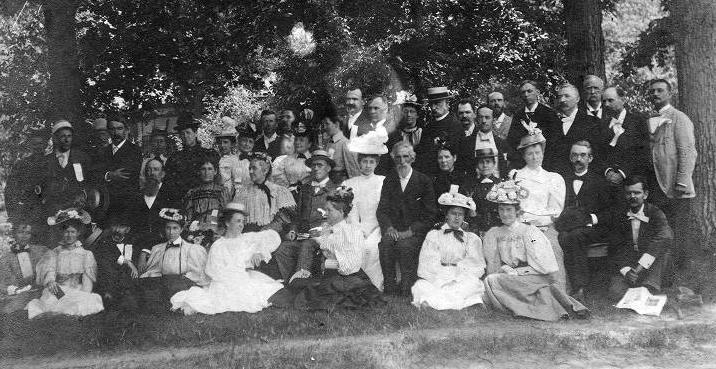In 1885, Marie L. Andrews of Connersville, Indiana, suggested forming a Midwestern writers group to encourage the development of a regional literature. Three contributors to the and the —J. N. Matthews, H. W. Taylor, and Richard Lew Dawson —joined Andrews in calling for an “association of the literary professions for mutual strength, profit, and acquaintance.”

On June 30, 1886, seventy-five individuals convened at Indianapolis’ and selected Crawfordsville writer Maurice Thompson as the first president. During a subsequent meeting on October 5, 1886, the group adopted a constitution and the name “American Association of Writers.” The name proved unpopular, however, since it gave a false impression of the organization’s scope and composition, as members were not all writers by profession and the association emphasized a regional, not national, literary fraternity.
Consequently, at the third convention held at Plymouth Church on June 29-30, 1887, the group adopted the name “Western Association of Writers.” From 1889 through 1904, the organization held its annual convention at Spring Fountain Park (later Winona Park), a resort on Eagle Lake near Warsaw, Indiana.
Seeking an identity distinct from eastern literary circles, the association became an outlet for writers from western states, though primarily from Indiana. Meetings included a variety of literary presentations, many of which were compiled in souvenir volumes of proceedings. Notable members included , , Paul Laurence Dunbar, , Charles Major, , Mary Hartwell Catherwood, and .
After 1900, attendance at annual conventions declined rapidly. The last recorded meeting, which 25 members attended, occurred on May 4, 1907, at the in Indianapolis. Initially, the group had great potential to become an influential regional association of professional authors. Its demise by 1908, however, could be attributed to its failure to maintain high literary standards, its inability to attract new authors, and its propensity for being, according to its critics, a “mutual back-scratching society.”

Help improve this entry
Contribute information, offer corrections, suggest images.
You can also recommend new entries related to this topic.